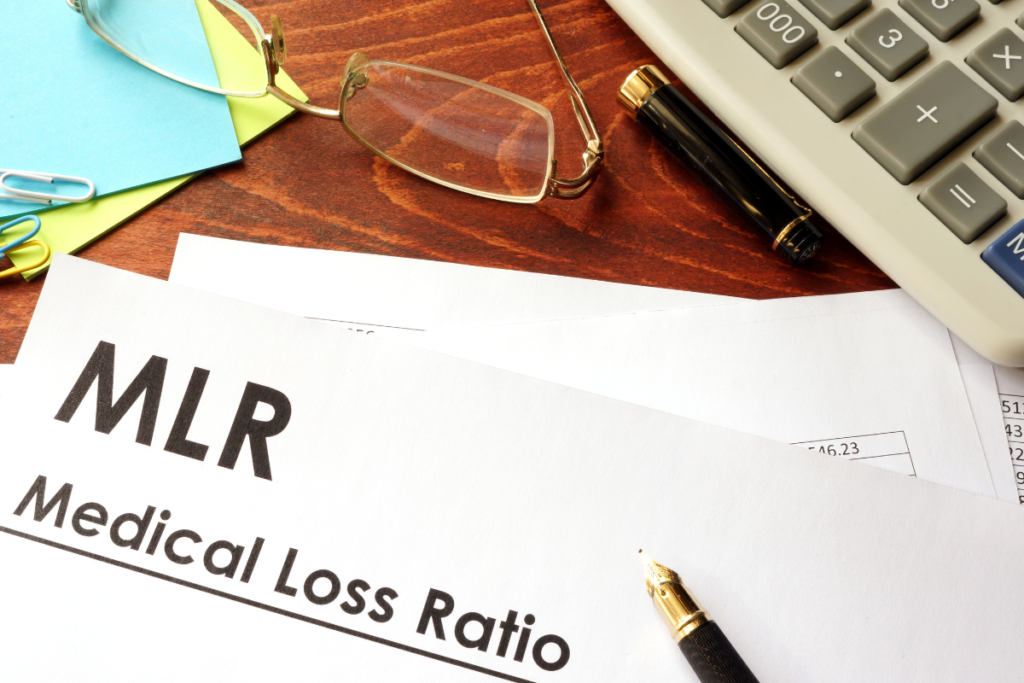Employers with insured group health plans may soon receive a medical loss ratio (MLR) rebate from their health insurance issuers. Issuers who did not meet the applicable MLR percentage for 2023 must provide rebates to plan sponsors by Sept. 30, 2024. These rebates may be in the form of a premium credit or a lump sum payment.
Employers who receive MLR rebates should consider their options for using the rebate. Any rebate amount that qualifies as a plan asset under ERISA must be used for the exclusive benefit of the plan’s participants and beneficiaries. As a general rule, employers should use the rebate within three months of receiving it to avoid ERISA’s trust requirement. In addition, employers who receive MLR rebates should be prepared to answer questions from employees about the rebate and how it is being allocated.
MLR DEADLINES
- The deadline for issuers to report their MLR data to the federal government for 2023 was July 31, 2024.
- Rebates for 2023 must be provided by Sept. 30, 2024.
- In general, any rebate amount that qualifies as a plan asset under ERISA must be used within three months of receiving it.
- For rebates received on Sept. 30, 2024, this three-month deadline is Dec. 30, 2024. This deadline should be adjusted for rebates received before Sept. 30, 2024.
MLR Rules
The MLR rules require health insurance issuers to spend a minimum percentage of their premium dollars on medical care and health care quality improvement. This percentage is 85% for issuers in the large group market and 80% for issuers in the small and individual group markets. States may set higher MLR standards than the federal 80% / 85% thresholds.
Issuers must report to the federal government how they spent their premium dollars for each calendar year by July 31 of the following year. Issuers who do not meet the applicable MLR standard must provide rebates by Sept. 30, following the end of the MLR reporting year. Issuers who issue rebates must provide plan sponsors and participants with a notice explaining the rebate and how it was calculated.
Using MLR Rebates
Most group health plans sponsored by employers in the private sector are subject to ERISA. Employers with ERISA plans should not assume they can simply retain an MLR rebate. In general, unless an employer pays the entire cost of health coverage without any employee contribution, at least a portion of the rebate will be a plan asset under ERISA. Any rebate amount that qualifies as a plan asset must be used for the exclusive benefit of the plan’s participants and beneficiaries.
Employers can satisfy ERISA’s exclusive benefit requirement by distributing the plan asset portion of the rebate to participants under a reasonable, fair, and objective allocation method. If distributing payments to participants is not feasible, the employer may use this portion of the rebate for other permissible plan purposes, such as applying the rebate toward future participant premium payments or benefit enhancements. Also, to avoid the requirement to hold plan assets in trust, employers should use any plan asset portion of the rebate within three months of its receipt.
Checklist for Using Medical Loss Ratio (MLR) Rebates
The ACA’s medical loss ratio (MLR) rules require health insurance issuers to spend a minimum percentage of their premium dollars on medical care and health care quality improvement. Issuers that do not meet the minimum percentage must provide rebates to policyholders.
This checklist outlines the key steps private-sector employers should take to identify permissible options for using MLR rebates.
This article is not intended to be exhaustive nor should any discussion or opinions be construed as legal advice. Readers should contact legal counsel for legal advice. ©2023 Zywave, Inc. All rights reserved.

